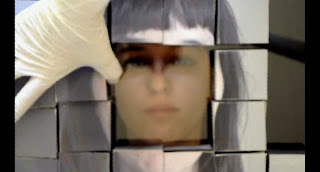Participation in the "mailto" project of the Drift Station Gallery, June 2011, Lincoln, Nebraska
The “mailto” tag was born with the web itself, creating a very useful link opening an email message to be sent to the site’s author. But the tag has become the scourge of web designers, with spamming robots trawling the web, targeting this bit of text to harvest email addresses. It is now generally considered “risky” to so openly publish one’s email address. Instead, designers resort to writing out the address as “anything [at] driftstation [dot] org” or more complex methods using JavaScript, PHP, etc.
For this exhibition, we exuberantly publish our email address and print anything received, and in doing so argue for a curatorial practice akin to chaos theory or aleatoric musical composition – that the initiation of a specific but open structure creates unexpected and diverse results. In this case, that structure is the open portal of an email address. As the digital files reach the printer (up until this point infinitely malleable and scalable), they are made manifest as fixed, physical objects. When hung on the gallery wall they each represent a small document in a curatorial process divorced from the geographically-focused perfection of the unique art object.
João Ribas’ 2009 exhibition Fax at The Drawing Center in New York City was built around a similar construct: a technology that allowed artists from around the world to deliver their work not by courier but by an electronic message. The site of production became dual, with the artist creating a piece in his or her studio that was then translated by the fax machine into an electronic signal, and finally back into physical form in the gallery.
mailto: differs in two important ways. First, it uses a contemporary and more flexible means of transmission, unlike Fax’s embrace of flawed and retro technology. But more importantly, we have not just asked well-known artists to send in works on a closed line. Instead, the doors have been thrown open to anyone with an email address. The flood of responses – almost 600 emails making up over 2,000 printed pages – included unexpected and exciting works such as photographs of homemade superhero costumes, intricate ASCII drawings, a series of spam email look-alikes targeted at art collectors, and continuous blasts of copy/pasted Facebook updates arrived in our inbox.
There are also the unexpected correspondences that come from the structure of email itself. A faulty email address sends a “message undeliverable” reply, which is auto-replied by our email, much like Cory Arcangel’s Permanent Vacation where two computers running email programs constantly auto-reply to each other until they crash or the exhibition ends.
Perhaps more than anything, the response to our open portal seems to sum up the kind of interactions a gallery receives when thoroughly and exuberantly engaging the internet: the colloquialisms and lingua franca of email communication, the diverse approaches and stylistic differences to how to respond to such an open invitation, spam and phishing attempts, and some great and weird art.
Jeff Thompson (June 2011)
From: Lydia Kontogiorgi
Subject: Wire (video stills) - Lydia Kontogiorgi
Date: June 1, 2011 12:26:20 PM CDT
To: anything@driftstation.org
4 Attachments, 4.3 MB





















